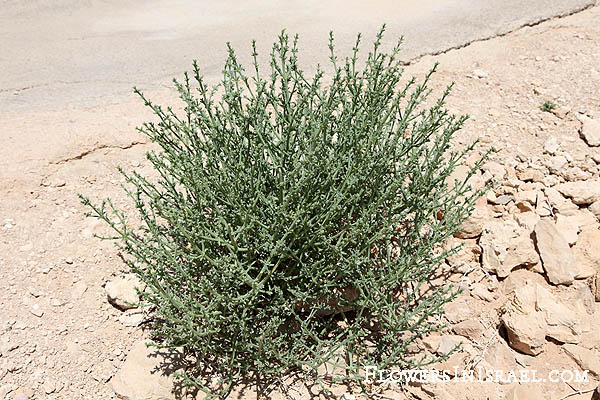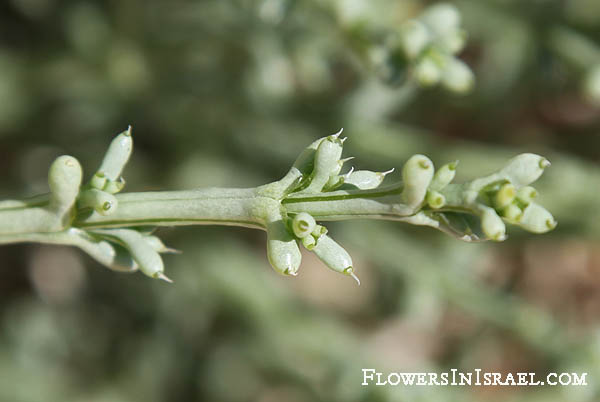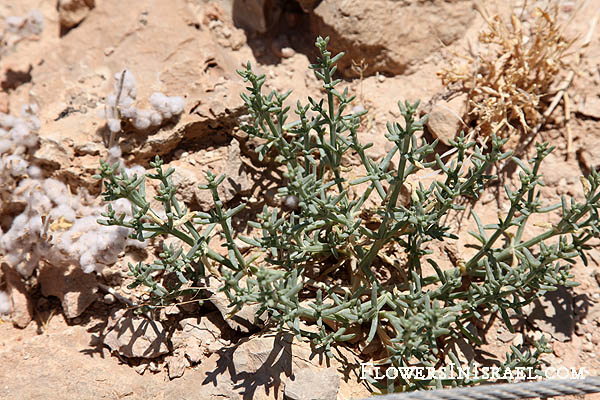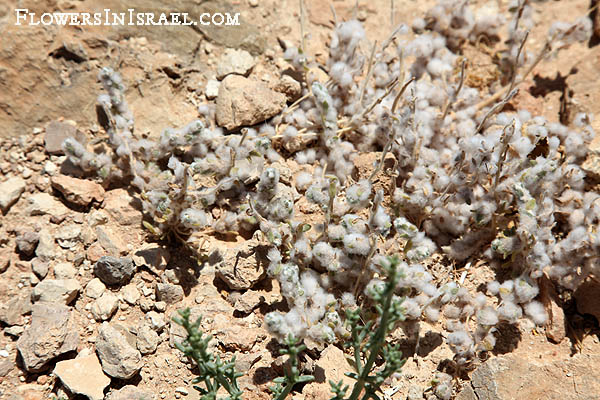Hebrew: יפרוק זיפני, Arabic: الشَّنَّان الشُعيري
| Scientific name: | Anabasis setifera Moq. | |
| Common name: | Anabasis | |
| Hebrew name: | יפרוק זיפני | |
| Arabic name: | الشَّنَّان الشُعيري | |
| Family: | Chenopodiaceae, סלקיים |

|
| Life form: | Chamaephyte | |
| Succulence: | Stem + leaf succulent | |
| Stems: | Succulent stems; deeply grooved; the stomata in these grooves are unable to open widely, thus reducing the risk of over-loss of moisture | |
| Leaves: | Opposite, cylindrial or terete | |
| Flowers: | Green | |
| Fruits / pods: | Dispersal fruit containing a seed, fruit coat, tepals, and 5 wings developing from the tepals back and assisting wind-dispersal | |
| Flowering Period: | August, September, October, November | |
| Habitat: | Desert | |
| Distribution: | Semi-steppe shrublands, Shrub-steppes, Deserts and extreme deserts | |
| Chorotype: | Saharo-Arabian | |
| Summer shedding: | Perennating |

Derivation of the botanical name: Anabasis, Ἀνάβασις, ana, "up" + bainein, "to go". setifera, seta, a bristle; fer, to bear, carry; bristle bearing. The Hebrew word: יפרוק, yifrok , jointed, composed of articulated segments.


|